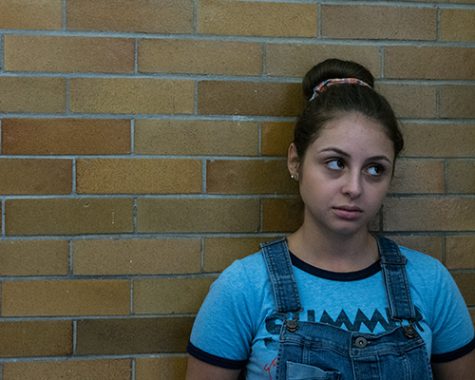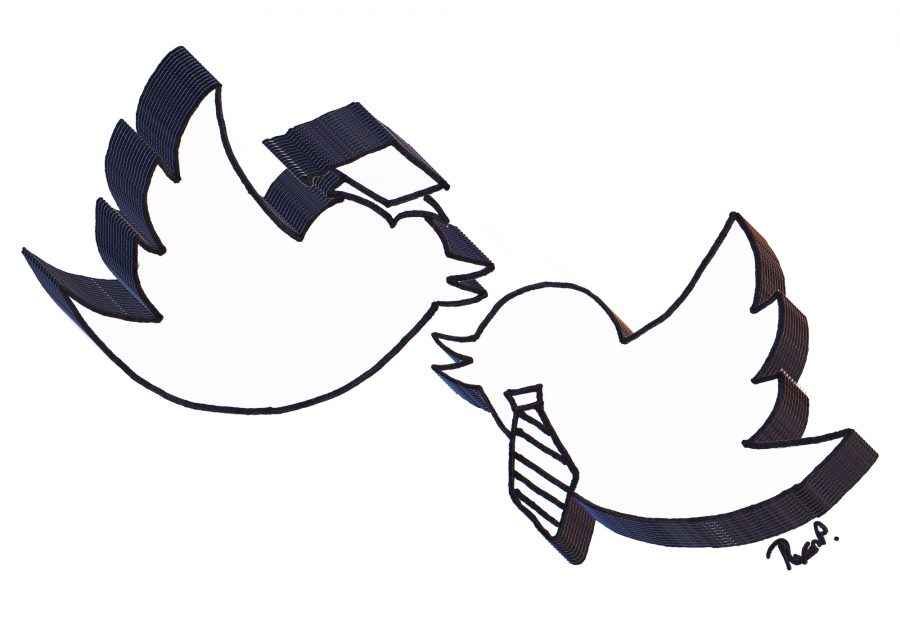Teachers interact with students via social media
Bringing the classroom and extracurriculars alive through social media, teachers and coaches are reaching out to students through the Internet. In order to make lessons more interactive, update student athletes and fans and acknowledge accomplishments, teachers connect online with students in their classes and other teachers across the nation.
Head cross-country coach John Sipple uses social media regularly to keep in touch with his athletes in boys’ cross-country and track and field.
“We use [social media] almost daily. Definitely more on meet days, but we use it a fair amount,” Sipple said.
Sipple uses social media, specifically the team’s twitter, @dgnxcandtrack, to notify athletes of schedule changes, calendar changes, and athlete’s achievements.
“A lot of it is [also] for publicizing achievements that the kids do. We put a lot of stuff out there about what’s happening at meets, what people have done, providing acknowledgments, and get[ting] people recognized,” Sipple said.
English chairperson Chris Bronke also maintains his own professional Twitter account using the handle @mrbronke.
Bronke said, “I use [social media], not only for school-related stuff, but also for my professional development as a whole; connecting with teachers across the country, staying up to date with articles and things that are going on that impact education.”
To connect social media to his classes, Bronke has his students create online profiles that are used solely for school purposes. Around mid-October, Bronke gets his students on Twitter and uses them throughout his English class.
“Even if they already have a Twitter account, I have [students] create one that’s just specific for school. I’m a big believer that what we need to understand about using social media is the purpose, the intention [of the profile],” Bronke said.
Going along with the theme of purpose, Bronke points out that he has multiple social media accounts used specifically for a certain subject.
“I have this professional account that I was talking about, but I also have some personal ones. . . one that’s dedicated to fantasy football, one dedicated to general pop culture stuff. I want the kids to understand the same thing, so I have them create one that they use to receive updates from me, but more importantly to enhance the learning process,” Bronke said.
When he assigns at-home reading Bronke does not assign any text-marking in the book. Instead, students tweet out their text markings to a class hashtag.
Bronke said, “The reading and learning experience becomes more social. It’s not graded at all, it’s more about the process of learning from one another. What it does for me is that I can jump into the conversation, and I can guide them. What I like to use it for is to get a sense of what they’ve already talked about. Instead of guessing what I have to do in class, I’ll know for sure.”
While not one specific teaching approach works for every student ― some students prefer to bury themselves in a book ― the more reluctant readers that prefer to be interactive “tend to like the more social side of it, the ability to have conversations with their classmates while they’re reading,” Bronke said.
Teachers connecting with students through social media allows social interaction and immediate feedback that would not be possible without the internet. Students are now allowed to communicate with each other and their teachers on subjects related to their classes, which can lead to gaining a better understanding of their reading.

For Netflix enthusiast Jasmine Abdallah, this will be her second year on the Omega staff as the In-Depth Editor. When she’s not writing, she’s in bed...


